
This is the first Daring Cooks Challenge and the recipe was chosen by our founders Lisa of La Mia Cucina and Ivonne of Cream Puffs in Venice and was taken from the cookbook by Judy Rodgers, named after her restaurant, The Zuni Café Cookbook.
I've never heard of the restaurant before and was curious to try a new recipe of the ricotta gnocchi after the one I made for the R2R challenge some time ago.
This time I bought the ricotta and I must say that spring is the time for the best sheep's ricotta but it's very moist (and delicious) . The problem is that I forgot to strain it the evening before so I tried to put it in a colander for a few hours but it wasn't enough so... I had to add some flour to the recipe !
The sauce was a very simple one with tomato, garlic and basil.
Zuni Ricotta Gnocchi
Source: From The Zuni Café Cookbook
Yield: Makes 40 to 48 gnocchi (serves 4 to 6)
Prep time: Step 1 will take 24 hours. Steps 2 through 4 will take approximately 1
hour.
Note: For our members who have special dietary requirements or who have to
alter the recipe for health reasons, our alternative Daring Cooks, led by Shelly
of Musings From The Fishbowl, have developed an alternative version of the
recipe. Please check the Alternative Daring Cooks' forums for more information.
Tips:
1. If you can find it, use fresh ricotta. As Judy Rodgers advises in her recipe,
there is no substitute for fresh ricotta. It may be a bit more expensive, but
it's worth it.
2. Do not skip the draining step. Even if the fresh ricotta doesn't look very wet,
it is. Draining the ricotta will help your gnocchi tremendously.
3. When shaping your gnocchi, resist the urge to over handle them. It's okay if
they look a bit wrinkled or if they're not perfectly smooth.
4. If you're not freezing the gnocchi for later, cook them as soon as you can. If
you let them sit around too long they may become a bit sticky.
5. For the variations to the challenge recipe, please see the end of the recipe.
Equipment required:
• Sieve
• Cheesecloth or paper towels
• Large mixing bowl
• Rubber spatula
• Tablespoon
• Baking dish or baking sheet
• Wax or parchment paper
• Small pot
• Large skillet
• Large pan or pot (very wide in diameter and at least 2 inches deep)
For the gnocchi:
1 pound (454 grams/16 ounces) fresh ricotta (2 cups)
2 large cold eggs, lightly beaten
1 tablespoon (½ ounce) unsalted butter
2 or 3 fresh sage leaves, or a few pinches of freshly grated nutmeg, or a few
pinches of chopped lemon zest (all optional)
½ ounce Parmigiano-Reggiano, grated (about ¼ cup very lightly packed)
about ¼ teaspoon salt (a little more if using kosher salt)
all-purpose flour for forming the gnocchi
For the gnocchi sauce:
8 tablespoons (227 grams/1/4 pound/4 ounces) butter, sliced
2 teaspoons water
Step 1 (the day before you make the gnocchi): Preparing the ricotta.
If the ricotta is too wet, your gnocchi will not form properly. In her cookbook,
Judy Rodgers recommends checking the ricotta’s wetness. To test the ricotta, take
a teaspoon or so and place it on a paper towel. If you notice a very large ring of
dampness forming around the ricotta after a minute or so, then the ricotta is too
wet. To remove some of the moisture, line a sieve with cheesecloth or paper towels
and place the ricotta in the sieve. Cover it and let it drain for at least 8 hours and up
to 24 hours in the refrigerator. Alternatively, you can wrap the ricotta carefully in
cheesecloth (2 layers) and suspend it in your refrigerator for 8 to 24 hours with a
bowl underneath to catch the water that’s released. Either way, it’s recommended
that you do this step the day before you plan on making the gnocchi.
Step 2 (the day you plan on eating the gnocchi): Making the gnocchi dough.
To make great gnocchi, the ricotta has to be fairly smooth. Place the drained ricotta
in a large bowl and mash it as best as you can with a rubber spatula or a large
spoon (it’s best to use a utensil with some flexibility here). As you mash the
ricotta, if you noticed that you can still see curds, then press the ricotta through a
strainer to smooth it out as much as possible.
Add the lightly beaten eggs to the mashed ricotta.
Melt the tablespoon of butter. As it melts, add in the sage if you’re using it. If not,
just melt the butter and add it to the ricotta mixture.
Add in any flavouring that you’re using (i.e., nutmeg, lemon zest, etc.). If you’re
not using any particular flavouring, that’s fine.
Add the Parmigiano-Reggiano and the salt.
Beat all the ingredients together very well. You should end up with a soft and
fluffy batter with no streaks (everything should be mixed in very well).
Step 3: Forming the gnocchi.
Fill a small pot with water and bring to a boil. When it boils, salt the water
generously and keep it at a simmer. You will use this water to test the first gnocchi
that you make to ensure that it holds together and that your gnocchi batter isn’t too
damp.
In a large, shallow baking dish or on a sheet pan, make a bed of all-purpose flour
that’s ½ an inch deep.
With a spatula, scrape the ricotta mixture away from the sides of the bowl and
form a large mass in the centre of your bowl.
Using a tablespoon, scoop up about 2 to 3 teaspoons of batter and then holding the
spoon at an angle, use your finger tip to gently push the ball of dough from the
spoon into the bed of flour.
At this point you can either shake the dish or pan gently to ensure that the flour
covers the gnocchi or use your fingers to very gently dust the gnocchi with flour.
Gently pick up the gnocchi and cradle it in your hand rolling it to form it in an oval
as best as you can, at no point should you squeeze it. What you’re looking for is an
oval lump of sorts that’s dusted in flour and plump.
Gently place your gnocchi in the simmering water. It will sink and then bob to the
top. From the time that it bobs to the surface, you want to cook the gnocchi until
it’s just firm. This could take 3 to 5 minutes.
If your gnocchi begins to fall apart, this means that the ricotta cheese was probably
still too wet. You can remedy this by beating a teaspoon of egg white into your
gnocchi batter. If your gnocchi batter was fluffy but the sample comes out heavy,
add a teaspoon of beaten egg to the batter and beat that in. Test a second gnocchi to
ensure success.
Form the rest of your gnocchi. You can put 4 to 6 gnocchi in the bed of flour at a
time. But don’t overcrowd your bed of flour or you may damage your gnocchi as
you coat them.
Have a sheet pan ready to rest the formed gnocchi on. Line the sheet pan with wax
or parchment paper and dust it with flour.
You can cook the gnocchi right away, however, Judy Rodgers recommends storing
them in the refrigerator for an hour prior to cooking to allow them to firm up.
Step 4: Cooking the gnocchi.
Have a large skillet ready to go. Place the butter and water for the sauce in the
skillet and set aside.
In the largest pan or pot that you have (make sure it’s wide), bring at least 2 quarts
of water to a boil (you can use as much as 3 quarts of water if your pot permits).
You need a wide pot or pan so that your gnocchi won’t bump into each other and
damage each other.
Once the water is boiling, salt it generously.
Drop the gnocchi into the water one by one. Once they float to the top, cook them
for 3 to 5 minutes (as in the case with the test gnocchi).
When the gnocchi float to the top, you can start your sauce while you wait for them
to finish cooking.
Place the skillet over medium heat and melt the butter. Swirl it gently a few times
as it melts. As soon as it melts and is incorporated with the water, turn off the heat.
Your gnocchi should be cooked by now.
With a slotted spoon, remove the gnocchi from the boiling water and gently drop
into the butter sauce. Carefully roll in the sauce until coated. Serve immediately.
Variations: For the gnocchi, you can flavour them however you wish. If you want
to experiment by adding something to your gnocchi (i.e., caramelized onion,
sundried tomato), feel free to do so. However, be forewarned, ricotta gnocchi are
delicate and may not take well to elaborate additions. For the sauce, this is your
chance to go nuts. Enjoy yourselves. Surprise us!!!
Freezing the gnocchi: If you don’t want to cook your gnocchi right away or if you
don’t want to cook all of them, you can make them and freeze them. Once they are
formed and resting on the flour-dusted, lined tray, place them uncovered in the
freezer. Leave them for several hours to freeze. Once frozen, place them in a
plastic bag. Remove the air and seal the bag. Return to the freezer. To cook frozen
gnocchi, remove them from the bag and place individually on a plate or on a tray.
Place in the refrigerator to thaw completely. Cook as directed for fresh gnocchi.















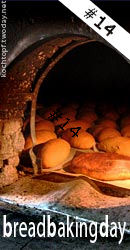
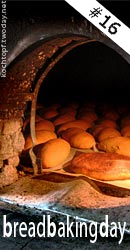
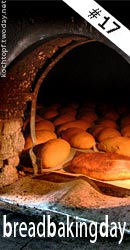





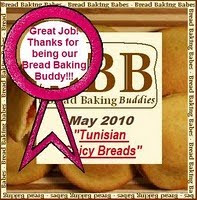

























































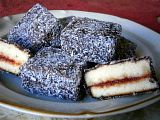






.jpg)











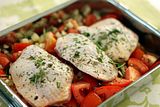

.jpg)





































